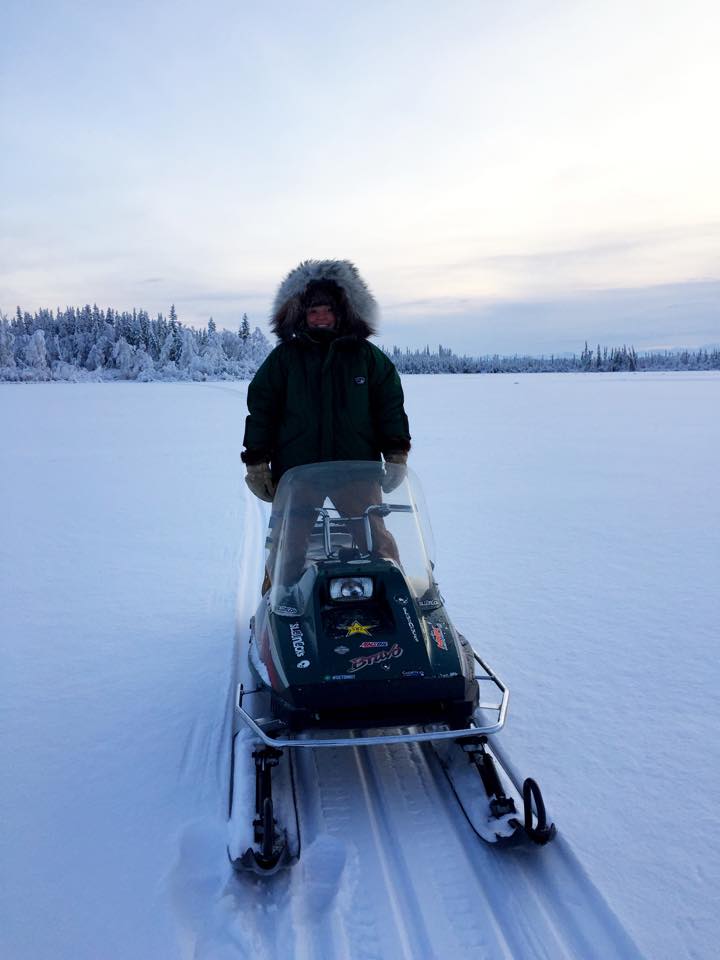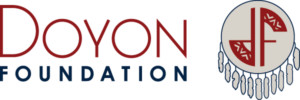Sharing Language through Children’s Books
As Doyon Foundation continues to grow our language revitalization efforts in the Doyon region, we are noticing a group of people who are committed and dedicating their own time to learning and perpetuating their ancestral language. We are pleased to share some of these “Language Champion” profiles with you. If you know a language champion, please contact our language program director at [email protected]. You may also learn more about our language revitalization program on our website.
 Language revitalization is important to Jamie Marunde. “Our Upper Tanana ways of life are changing so much and one part of our culture that we can always have and share is our language. It’s also a lot of fun to learn and practice,” said Jamie, who is the daughter of Glen and Cherie Marunde of Northway, Alaska. She lived in Northway for 19 years and has spent the past 10 years between Anchorage and Fairbanks, Alaska.
Language revitalization is important to Jamie Marunde. “Our Upper Tanana ways of life are changing so much and one part of our culture that we can always have and share is our language. It’s also a lot of fun to learn and practice,” said Jamie, who is the daughter of Glen and Cherie Marunde of Northway, Alaska. She lived in Northway for 19 years and has spent the past 10 years between Anchorage and Fairbanks, Alaska.
Jamie is a former Doyon Foundation scholarship recipient, receiving support for her associate’s degree, bachelor’s degree and MBA. She currently works at Doyon, Limited as the operations manager, and is also the chair of Northway Natives, Inc., where she is the youngest elected member.
Earlier this year, Jamie was one of 13 Alaskans honored with a 2016 First Lady Volunteer of the Year Award. She was selected for the prestigious award because she has been a role model for young people in her village by living a healthy lifestyle, pursuing a higher education, and being committed to her culture and language.
Among her many activities, Jamie and her mom are leading an effort to create children’s books using the Upper Tanana Athabascan language. Upper Tanana Athabascan is spoken mainly in the Alaska villages of Northway, Tetlin and Tok, but has a small population also across the border in Canada. The indigenous name for the language is Nee’aaneegn’. The language is one of the 10 endangered Native languages in the Doyon region. Learn more about these languages and efforts to revitalize them on the Foundation website.
“My mom wanted to start making the books for her grandson and was translating our Upper Tanana words under English words in English books already,” Jamie said. “We came up with the idea to create our own Athabascan books for our own Athabascan youth.”
Jamie’s mom writes the words and double checks everything with Elders and other fluent speakers to make sure it is accurate. The village youth draw or color the pictures. Jamie then takes all of their work and inputs it into online software to create the book.
To date, they have created nine books, with seven readily available to purchase online at www.blurb.com/user/jamiem907. Book topics include counting from 1 – 10, body parts, common phrases, animals, bugs and weather. Future book ideas include fishing terms and family titles. Jamie said they plan to continue making as many books as possible and, in the future, would like to develop an Upper Tanana language app.
“Our goal is to create quality materials that are fun and teach our language,” Jamie said. “We are also trying to capture as many words as we can that aren’t in existing dictionaries while we have that opportunity.”
